Student Learning
I will:
- Explain the meaning of the Canadian flag
- Explain the Indigenous elements contained within the New Brunswick Coat of Arms
- Distinguish environmental features in the First Nations flags
- Design my own family flag
In this lesson, students will examine flags used by Wolastoqewiyik, Mi’kmaq and Passamaquoddy as well as the Canadian flag along with the New Brunswick Coat of Arms.
Each of the Nations of Waponahki (Wabanaki Territory which includes Nova Scotia, New Brunswick, Maine and parts of Quebec) has a flag. The Penobscot and Abenaki flags are not discussed here as these nations have no members in New Brunswick. Like the national flag of Canada, the flags of the First Nations are their national symbols. They are used as reference points in negotiations when in a formal setting and are symbols of pride. The Grand Councils of Wolastoqewiyik, the Mi’kmaq, and the Passamaquoddy are part of the Confederacy of Waponahki (Wabanaki). The Confederacy of Waponahki is the original democracy for what is now New Brunswick, Maine, Newfoundland, and Prince Edward Island. Its membership stretches to the state of New Hampshire. So powerful was this Confederacy that Waponahki soldiers from Canada are still permitted to join the United States military (Jay Treaty).
Symbols such as flags help represent the different beliefs of each nation and help reinforce those beliefs. They are used for influencing people, showing solidarity, and sometimes for control. The First Nations flags all demonstrate interdependence with their environment. If the treaties were to be signed now, there is no doubt that the First Nations flags would play a prominent role in the ceremony.
Flag of Canada
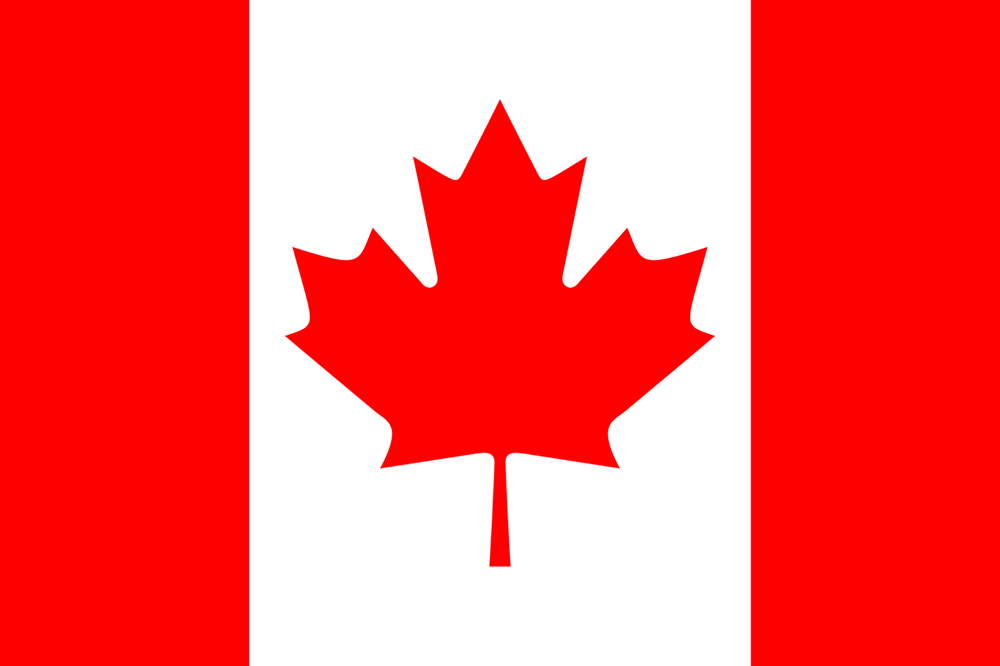
The flag of Canada, often referred to as the Canadian flag, or unofficially as the Maple Leaf and l’Unifolié (French for “the one-leafed”), is a national flag consisting of a red field with a white square at its centre, in the middle of which is featured a stylized, red, 11-pointed maple leaf. It was designed by George Stanley who was a Lieutenant Governor of New Brunswick and the founder of the Canadian Studies program at Mount Allison University in Sackville.
When it was raised on February 15, 1965, the following words spoken by the Honourable Maurice Bourget, Speaker of the Senate, added further symbolic meaning to the flag: “The flag is the symbol of the nation’s unity, for it, beyond any doubt, represents all the citizens of Canada without distinction of race, language, belief or opinion.”
Mi’kmaq Nation Flag
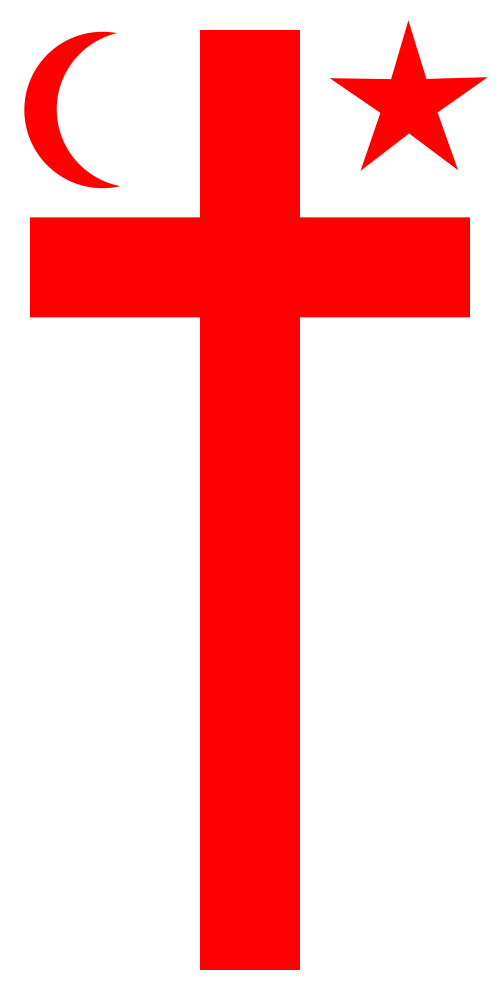
The Mi’kmaq Nation flag is commonly referred to as the Santé Mawio’mi flag or the Grand Council flag. The Mi’kmaw Nation flag’s colours and symbols each have distinct meanings:
- Wape’k (White) – Denotes the purity of Creation
- Mekwe’k Kloqowej (Red Cross) – Represents mankind and infinity (four directions)
- Na’ku’set (Red Star) – Forces of the day
- Tepkunaset (Red Moon) – Forces of the night
Wolastoqewi Motewekon
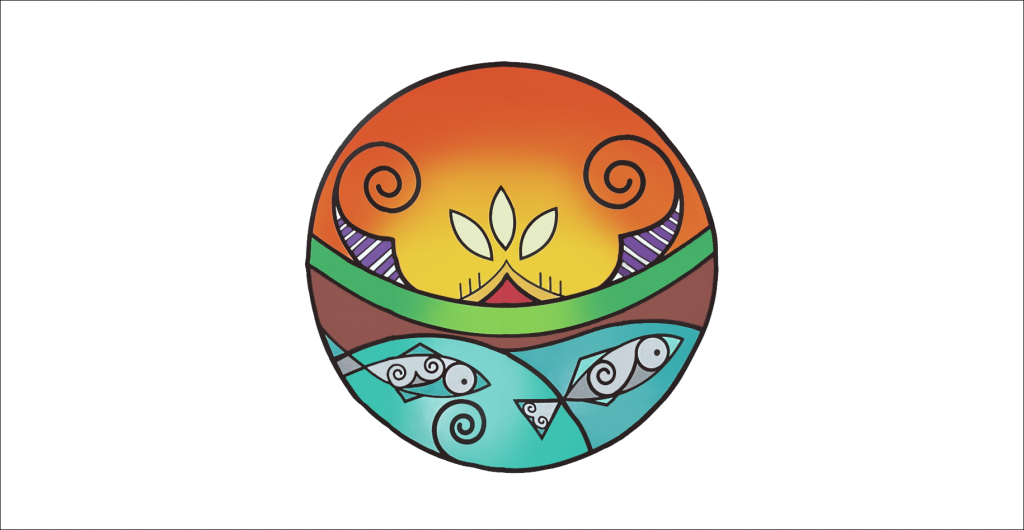
The Wolastoqewiyik Nation flag incorporates many elements that are culturally significant. The canoe and paddle represent the ancestral technology of transportation of the birchbark canoe and ash paddle. The river symbolizes not only who they are as People of the Beautiful River, Wolastoqewiyik, but also how the river highway keeps Wolastoqewiyik connected to all of their communities. The fiddlehead double curve designs in the corners are emblematic of the symbol for life, generations, past and present, and the traditional food source. The colours in those designs incorporate the four sacred colors of creation and the colours blue for water and tan for the land and islands. The salmon in the center has been another source of sustenance for Wolastoqewiyik and embodies their spirit of resilience and strength. The deep green of the flag represents the Earth. The flag is used by all of the Wolastoqewiyik Nation and is respected as a symbol of unity.
Passamaquoddy (Peskotomuhkati) Flag
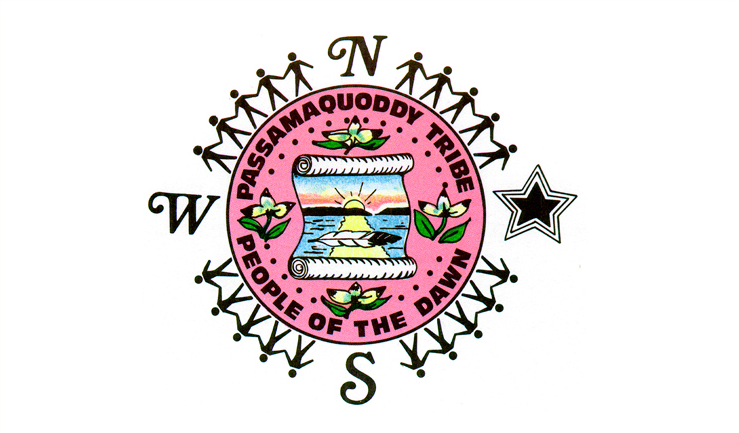
This new design, called the “scroll” design, is a white flag bearing the new seal of the Passamaquoddy (Peskotomuhkati) Nation. The seal begins with a circle of people (twenty in all) holding hands in four groups of five. These figures are separated by the three directions and eastern star. This denotes the unity of Passamaquoddy “with all Native Americans from the North, South, East and West” (Interpretation of the Pleasant Point Passamaquoddy’s Tribal Logo, unsigned, undated letter, Pleasant Point Reservation, ME). The “Predominant Star” is the Passamaquoddy representation of Eastern Tribes.
Within the ring is a circular seal representing the Circle of Life. This circle is red recalling the “Red Race”. In the four prime directional points of the red circle are plants depicted in yellows and greens, representing the Eastern Woodlands. Centered on the circle is a scroll for the settlement of land claims. This is also the symbolism of the “dripping feather” that appears in front of the scroll. Upon the scroll, in natural colors, is a sunrise over the land at Passamaquoddy Bay and the reflection of that sun upon the waters of the Bay.
These images attest to the Indigenous rights of Passamaquoddy and a recognition that this bounty was given to Passamaquoddy by the Great Spirit. The design is completed by the black dots, tribal name and legend “People of the Dawn” that originated before 1980. On the new seal all these elements appear in black.
New Brunswick Coat of Arms
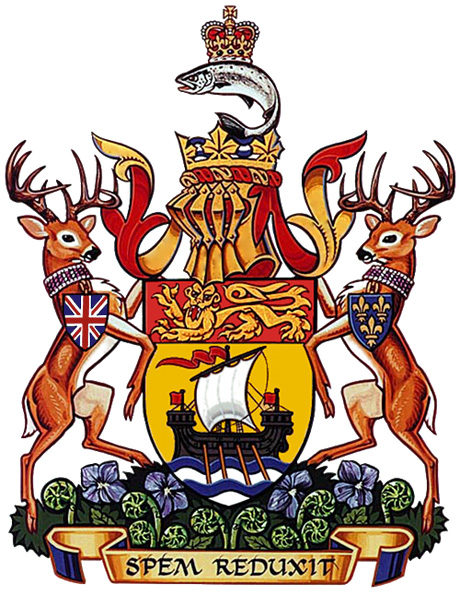
- Above the shield is an Atlantic salmon with a crown.
- White-tailed deer are standing on either side of the shield.
- The two deer are wearing collars of wampum.
- The small shields on the deer represent the early settlers – the English, Irish, Scottish and French.
- The deer are standing on a mound of violets and fiddleheads (ferns).
- The motto Spem Reduxit means “Hope restored” in latin.




